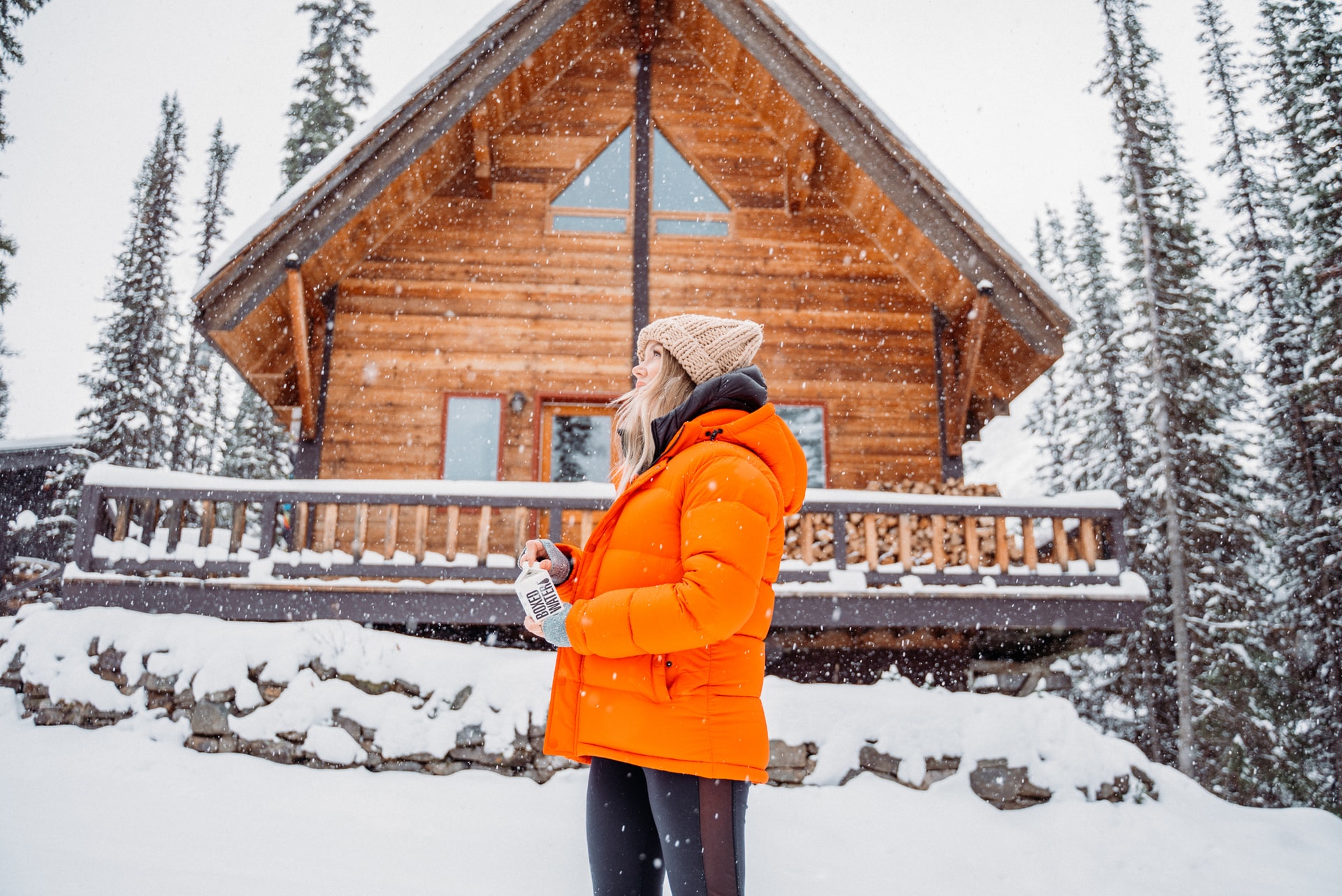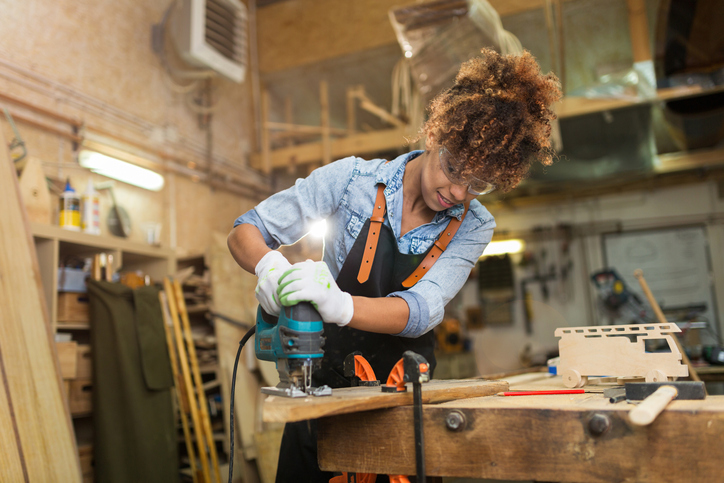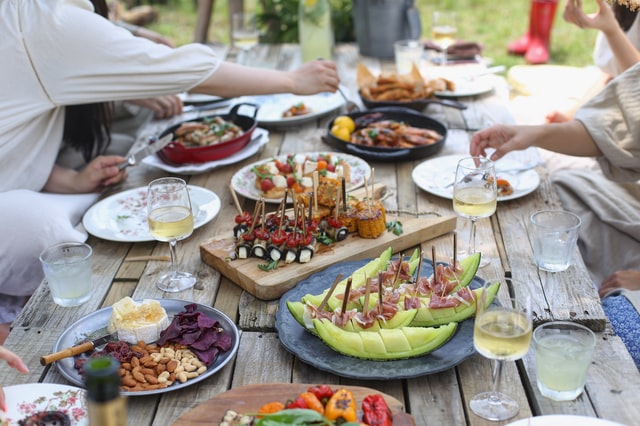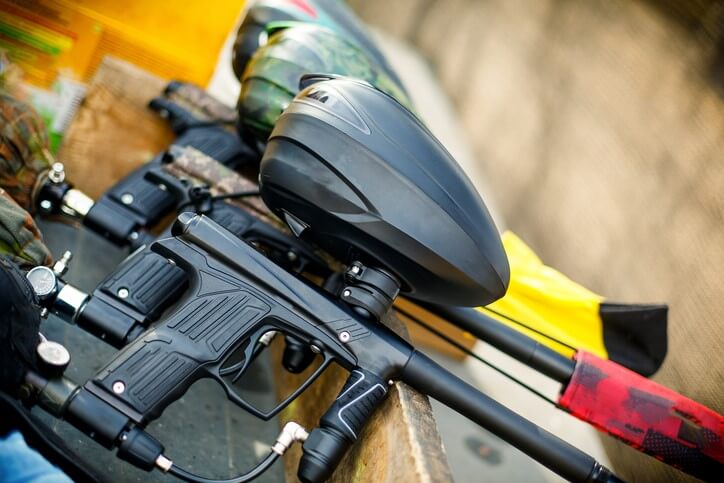Winter can be the most unforgiving season with its heavy snowfalls, ice, and freezing temperatures. Because many regions experience dangerously cold winter temperatures, our homes must be properly winterized for the season ahead. With some plumbing basics and careful preparation of a few essential home improvements, we can prevent our plumbing system from freezing. In this guide, we’ll explore how to effectively winterize exterior and interior aspects of your home that may be vulnerable to freezing. Use these tips to keep your home cozy and safe from the elements all winter long.
How to winterize your exterior
Fall is prime time to winterize your home. There are many tasks that you’ll need to attend to prevent weather-related problems in the months ahead. In some cases, if you’ve winterized exterior elements in the past, they may only need to be checked now—some tasks need to be repeated each year. Here, we’ll explore how to winterize your exterior home effectively.
Preventing frozen pipes
Frozen pipes are a major concern for property owners. When the temperature dips below freezing (usually exterior pipes will not freeze unless the temperature drops down to 20 degrees Fahrenheit or below for at least six consecutive hours), exterior pipes can freeze. When temperatures drop far below the freezing point, some interior pipes are at risk, particularly those close to outer walls with little access to interior heat.
Ideally, you should try to protect your pipes with insulation so that when the temperature hits that 20 degrees F point, they have some protection. If the pipes freeze, they’re subject to bursting because freezing causes water to expand. As the water expands, it can cause weak sections of the pipe to rupture. If the pipes burst, it’s often a costly repair.
Protect your pipes
You can protect your exterior pipes using electrical heating tape. This is commonly a DIY practice, but if you’ve never done it before, you might want to consult your plumber or watch some helpful YouTube tutorials that teach you the best plumbing hacks to ensure you tackle the job properly.
Remove hose and insulate faucet covers
Before the winter’s arrival, be sure to remove your garden hose and insulate your exterior faucets. After removing the hose, be sure there are no leaks. If your faucet needs repairing, perform that task before you cover it for the winter. You can duct tape a makeshift cover for your faucet, or you can purchase a ready-made one at your local hardware store. Before installing a cover on your faucet, be sure all the water has drained.
Winterize outdoor furniture
Often, patio furniture today is designed to remain outdoors, but that doesn’t mean that’s always the case or that it won’t weather the winter more safely if stored in a garage or storage shed. For instance, plastic isn’t typically a material that does well if left outdoors during the winter. While it is waterproof, freezing temperatures and winter storms can cause cracks in the plastic. Strong winds can sometimes blow these furnishings into trees, shrubs, or the home structure as well, so it is important to learn how to winterize your patio furniture.
Metal patio furniture
Powder-coated metal furniture can be left outdoors. Just clean and stow any cushions for the winter. If your metal has any rust spots or chips in its paint/sealer, make these small repairs to prevent the problem from getting larger over the winter.
Wood patio furniture
If you leave your wood furniture outside, be sure that it’s properly treated to withstand the elements. Teak is often left outside to weather all year round, but if you want this wood to retain its original hue, be sure to oil it every year.
Wicker and rattan
While wicker can be left outdoors, rattan should be stored in a dry place during the winter. In fact, if possible, bring both these materials indoors if your winters tend to be rough and harsh. Neither of these materials is as durable as solid wood or metal.
Seal holes and cracks
Even the smallest holes and cracks can allow cold air to seep into your home, forcing your heater to work harder than it needs to. Preventing drafts will also help you create a cozier environment. Places where pipes or wires enter your home are especially vulnerable. Be sure to insulate or seal any cracks or holes with caulk. Moreover, these openings—even very small ones—leave your home vulnerable to common winter pests that will be looking for a warm place to shelter.
According to the DOE, inadequately sealed fireplaces are one of the worst air leakage sources in homes and by weatherstripping the fireplace, one can reduce air leaks by 14% or more, a fireplace plug solves this problem. Another commonly overlooked air leakage area is the attic access. Pulldown attic staircases are rarely properly weather-stripped and even when they are, they have a very low r-value, a stair cover fixes that, so check out these types of new products that will help you save money and energy.
Clean your gutters
Winter weather typically includes rain as well as snow. It’s essential to ensure that your gutters are free from debris so that rainwater and snowmelt can flow freely through the gutter system. If your gutters are filled with fall leaves, branches, or other debris, they’ll block water from draining. This allows puddles of water to sit and, when temperatures dip, to freeze. The frozen water in the gutters expands and can cause your gutters to leak, especially at the seams.
How to clean your gutters
If you don’t have gutter guards, you’ll need to manually remove the gunk in your gutters. It’s helpful to clear out a section at a time; spread a tarp below to catch all the debris you remove using a hand shovel. Once you’ve removed all the debris, use your hose to clean away any remnants and dirt and to ensure that your gutter system is working properly. If you note any leaking, be sure to make the repairs before the winter arrives.
Snow management
If you live in an area prone to snow and ice, be sure you are ready to tackle these elements with the proper equipment. If you don’t have a snowblower, be sure to purchase a sturdy snow shovel, ideally, with an ergonomic handle. You may also want to purchase a supply of salt to combat ice that develops on walkways and porch steps. Be sure to store these items, so they’re protected from the elements but are also easily accessible when you need them.
Outdoor window winterization
Many people put up storm windows for the window to help better insulate their homes. Drafts can often make their way through the cracks around windows. At some point in fall, inspect your outdoor window frames and fill any cracks to keep out those winter draughts.
Indoor winterization tips
There are also many tasks you can perform inside of your house to prepare for winter. After contending with your home’s exterior, be sure to tackle these winterization chores next.
Indoor window winterization
If your windows are older and not particularly energy-efficient, they can detract from your home’s cozy environment by allowing cold air to seep inside. You can help block those draughts from entering quite inexpensively by installing clear window film over the glass. This film is available at home improvement centers and hardware stores. Use it on all your windows or just those that are especially prone to drafts. You can also add weather stripping to both windows and doors to help block drafts and to keep your heat inside where it belongs.
Add more insulation
You can ensure that heat stays inside your home where it’s meant to be by installing more insulation, especially in your attic. Heat rises, so if you don’t have enough upstairs insulation, that heat will rise up and out of your home. Keep the heat inside by adding more insulation to your attic. You can also add more insulation to walls if need be. Insulation will help you reduce your heating costs because your heater will have to work less hard to maintain your preferred temperature.
Heating system
Keeping your heating system in optimum working condition is essential during the winter. Ideally, you should invite your HVAC contractor to your home to perform an annual furnace inspection and tune-up during the fall. Your contractor can spot signs of wearing parts before they lead to breakdowns. You’ll also want to have your furnace filter replaced.
Next, make sure that your chimney is clear and clean all of your air vents. Be sure to test your thermostat to ensure it’s heating your home according to the temperature you set. Don’t forget to switch the direction of your home’s ceiling fans so that they blow air downward. Heat rises, so you want to keep it down in the living space and not up near the ceiling.
Change batteries for smoke and carbon monoxide detectors
Ensure that part of your winterization routine involves changing the batteries on all of your smoke detectors and carbon monoxide detectors. With the use of heaters and even space heaters, you want to reduce any risks for fire and ensure that your detectors are tested and working properly to help protect you in the event of a fire or carbon monoxide emergency.
Use these tips to prepare your interior and exterior home for the long winter season. A sunny weekend in October is a great time for fall home maintenance and get your home ready for the cold season ahead.




